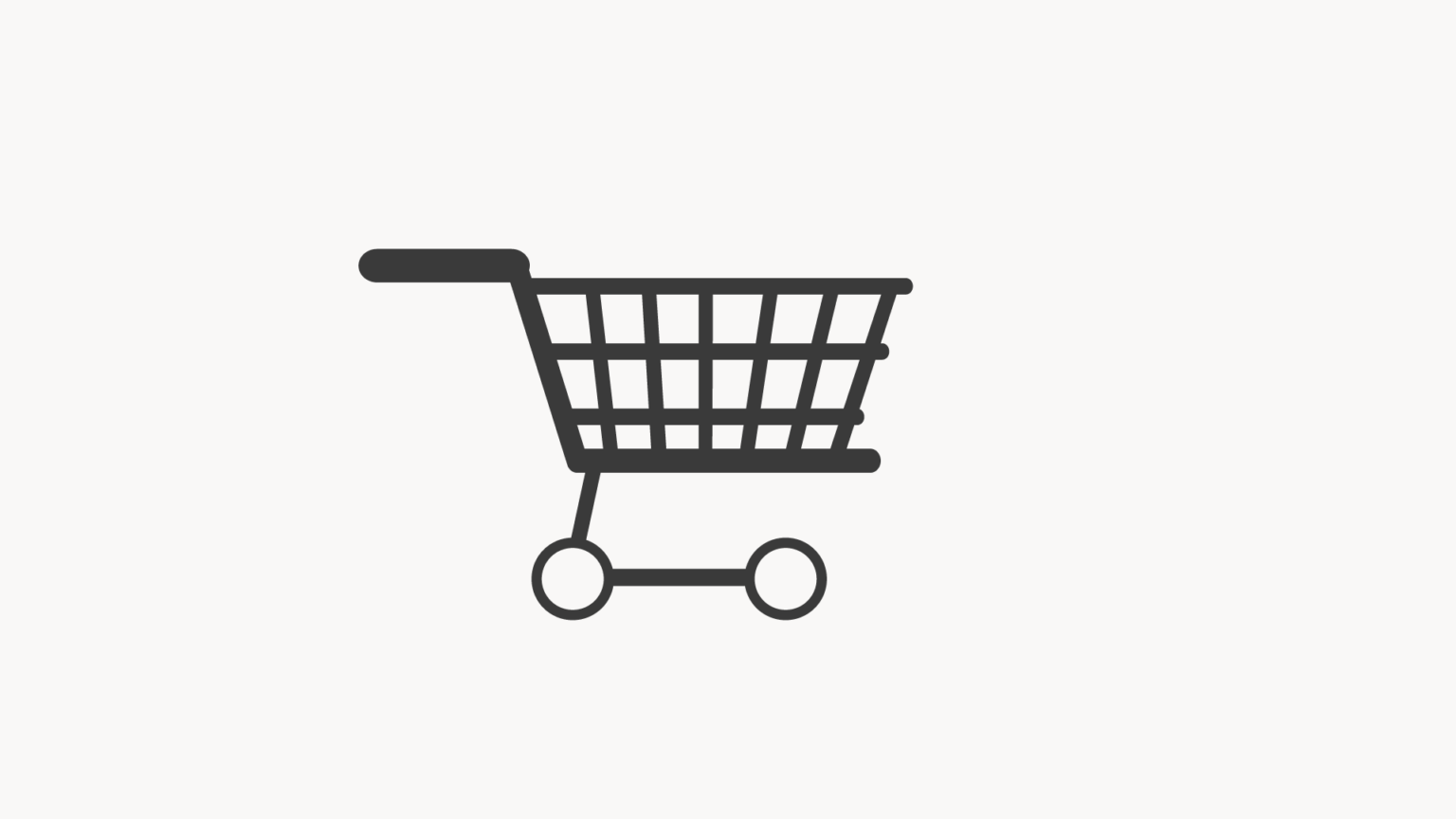Trending: Here are some Business Statistics and Trends to know
|
Getting your Trinity Audio player ready...
|
In a world where so many people are turning to ecommerce to supplement their income, it’s important to understand eCommerce statistics and trends that will drive this sector in the years to come. With fluctuations in global economies and consumer preferences, it’s essential for business owners and marketing professionals to stay ahead of the curve.
It’s no secret that ecommerce is on the rise. And while there are many factors driving this trend, understanding ecommerce statistics can give you a leg up on your competition.
In this article, we’ll explore key ecommerce statistics that will help you predict future trends in the sector like buyer behavior, online sales growth, customer retention rates, web traffic data, ecommerce marketing and more. By understanding these ecommerce stats, you’ll be able to make better decisions about your website and marketing strategy.
Table of Contents
What is eCommerce?
Ecommerce is the buying and selling of goods and services online. It includes everything from retail stores to digital marketplaces, subscription services, and more.
Global ecommerce is an exciting and rapidly growing industry that has the potential to revolutionize the way businesses interact with customers.
It involves selling products or services across geopolitical borders from a company’s country of origin, normally defined as its founding or incorporating location. This type of commerce is conducted online, allowing businesses to reach customers in new markets without having to physically set up shop in those locations.
Recent forecasts anticipate a 9.7% increase in worldwide ecommerce sales over the most recently tracked period, with minimal declines in growth over the next few years. These numbers are staggering and demonstrate just how much potential there is for businesses to expand their reach and tap into new markets through global ecommerce.
With the right strategies and tools, companies can take advantage of this opportunity to grow their customer base and increase their profits.
General eCommerce Statistics
General eCommerce Statistics provide a comprehensive overview of the current state of the ecommerce industry. These statistics can help businesses understand the size and scope of the industry, as well as identify key trends that could impact their own operations.
1. Retail ecommerce sales are projected to reach $8.1 trillion by 2026.

The last few years have solidified ecommerce as a part of the global retail industry. This industry has seen significant changes since the internet and consumers are growing their online shopping dependency.
In 2021 retail ecommerce sales grew over the $5.2 trillion dollars and is expected to reach 8.1 trillion dollars by 2026 according to Statista’s new data projections. The number of internet users keeps on increasing and its best for business to prepare themselves by transforming to ecommerce.
2. The ecommerce share of the total global retail market share will be 24% by 2026.

Ecommerce has been on an upswing for a while now, with more and more people shopping online every day. It’s no wonder that the ecommerce sector is growing at a rapid pace, it accounts for about 19% of global retail sales.
However, there are some challenges that businesses in this sector face. Chief among these is growth, as ecommerce expands, so does the number of competitors. Plus, the trend of people shopping for goods online then taking them to physical stores remains strong. This means that there will be an increasing demand for both ecommerce and physical retailers.
In 2026, the ecommerce share of the global retail market is projected to reach 24%. This projection was made by Statista. This should give businesses strength in terms of planning their strategies; knowing what segments of the market are most likely to grow quickly is key to success. Additionally, this growth bodes well for both small businesses and mega corporations, whichever sector they target will experience robust growth.
3. Brazil is the country with the highest ecommerce growth rate at 20%.

A recent report shows that Brazil has the highest ecommerce growth rate in the world at 20%. This is partially due to Brazilian consumers’ preference for buying items and the increasing use of mobile and tablet devices. But there’s more to it than just that.
Brazilian businesses are starting to see the value in ecommerce, which is translating into higher sales figures. Ecommerce growth in Brazil won’t plateau anytime soon – it’s onward and upward.
Retail Ecommerce Growth by Country

4. In a year the average shopper makes 19 transactions but it varies by location.

The average person makes 19 online transactions in a year, but this number can vary depending on the location. For example, one study showed that the average shopper in China makes 22 transactions per year, which may be a contribution to china being the biggest in ecommerce sales.
5. About 55% of people shop online because of free shipping

What’s the best part about shopping online? Obviously, the free shipping. And according to a new report by Adobe, it’s actually what’s driving 53% of online shoppers to make their purchases. The report found that 86% of people abandon their cart because of shipping costs.
Shipping is one of the biggest expenses for most people, and sometimes it can be hard to justify spending money on something when you can get it for free. There are a lot of times where shipping costs can be a real deal-breaker in the shopping process.
When it comes to online shopping, free shipping definitely one of the key factors that customers look for the most. If you’re able to offer great shipping rates in addition to your other products and services, you’re sure to drum up a lot of business.
6. On average shopping cart abandonment rate is 69.99%.

It’s no surprise that online shopping carts are abandoned on a regular basis. In fact, the average abandonment rate of carts is 69.99%.
This means that approximately 7 out of 10 online shoppers will not complete their transaction and only 3 in 10 shoppers will make it to the end of the checkout process. This number is really high considering that someone had already started the process of buying.
It could mean that while they go through the buying process and fill the forms, they found something they didn’t like. One of the key things being the shipping costs for what they are buying.
7. Mobile eCommerce global sales are projected to reach $728.28 billion by 2025.

Mobile commerce is the quickest growing retail sector on the planet. According to a report from Statista, the global mobile eCommerce sales are projected to exceed $728.28 billion by 2025.
This enormous growth has been propelled by several key factors such as technology advancements, lower entry barriers, and burgeoning demand for innovative services across developing economies. These factors will continue to drive mobile eCommerce in coming years.
8. In 2023, 54% of consumers want to see more video content from the businesses they follow.

Video content continues to dominate the internet, and businesses are starting to see the benefits. According to a recent study by Animaker, 54% of consumers want to see more video content from the businesses they follow. In fact, three quarters of consumers prefer watching video content over reading text.
9. About, 89% of eCommerce companies are investing in personalization.

Personalization is one of the most important features that eCommerce companies need to offer their customers. It allows digital buyers to connect with the brands they love, and it makes them feel special. Studies show that 89% of eCommerce companies are investing in personalization.
Personalization has become an essential part of customer experience in eCommerce. Personalized experiences help retailers create deeper connections with their consumers, and it helps them continue to drive conversions and retain customers. It’s also more fun for users, as it makes shopping more personalized.
There are huge benefits to personalizing your eCommerce site content and experiences. Customers love it when brands put enough effort into personalizing their websites for them, and businesses that focus on personalization see big benefits in terms of top-line growth and customer retention.
10. The average order value on online sales is about $112 in the US, and $95 in EMEA.

Online shopping is increasingly becoming the preferred method of buying goods and services, contributing to a significant percentage of overall annual sales. But how much do customers typically spend per purchase?
Online shoppers have quickly adapted to the convenience of purchasing items online in today’s on-the-go society. This significant shift toward online purchases has presented an opportunity for businesses to increase their online sales revenue by understanding more about consumer behavior.
Research indicates that the average order value (AOV) for online orders hovers around $112 for each purchase in the United states and $95 in the EMEA regions. AOV measurement is an important metric within eCommerce circles, as it helps companies predict future income and evaluate purchasing trends among its customer base.
11. About 93.5% of global internet users have purchased products online.
Do you like shopping online? If you do, you’re not alone – 93.5% of global internet users have purchased products online at least once. This remarkable statistic shows that online shopping has grown into a major force in the retail industry over the past decade.
As technology advances and more people gain access to the internet, this number is only likely to increase. By understanding how, why, and what consumers are buying online, retailers can benefit from this shift towards digital shopping habits.
12. Around 50% of people say they’d purchase something from a website’s chatbot using conversational marketing. (Drift)

Chatbot technology has been revolutionizing the way we communicate with businesses online. Instead of filling out forms or waiting on hold for customer service, people can now quickly get answers to their questions through automated chatbots on websites. But are customers actually interested in buying products through these conversational marketing channels?
Conversational marketing combines the convenience of bots with personalized communication to bring businesses and customers closer together. It is an emerging medium that offers exciting new opportunities for businesses to grow sales and engage customers in real-time conversations. Recent studies have revealed that almost half of people are willing to purchase something from a website’s chatbot using conversational marketing.
This finding indicates that chatbots have the potential to be extremely valuable for companies looking for more efficient ways to increase sales and improve customer experiences.
eCommerce Platform Statistics
The eCommerce industry is rapidly growing, and the platforms used to power online stores are becoming increasingly important. Knowing which eCommerce platform is most popular can help businesses make informed decisions about where to host their store.
13. The most popular ecommerce platforms are WooCommerce and Shopify hosting over 4.75 million websites.

With the increased demand for online retail, ecommerce platforms have become increasingly popular and widely used by small businesses to big enterprises. But which ones are the most popular and offer the best features for your business needs?
The two major players in the world of ecommerce platforms are WooCommerce and Shopify. Both have their own unique features and advantages to consider when creating an online store.
Currently there are over three million live websites using WooCommerce to power their online storefronts. This is almost 2 times that of stores using Shopify standing at about 1.75 merchants.
These ecommerce platforms are both great and offer their different advantages. But as a business you must do your research on the best ecommerce platforms you can use to power your business.
Online Consumer Behaviour statistics
Online consumer behaviour is a rapidly changing landscape, and understanding how people shop online can help businesses better target their customers. Here are some key statistics to consider when it comes to online consumer behaviour:
14. About 218.8 million people in the US will shop online in 2023.

Online shopping has made it easier than ever to purchase items quickly and securely. As consumer preferences continue to shift more towards online shopping, perditions suggests that the number of online shoppers in the United States will reach 218.8 million in 2023. This number is expected to reach $278.8 million in 2024.
As the United States continues its digital transformation into an increasingly connected economy, understanding how digital commerce is evolving becomes even more important for companies looking for competitive insights or strategies for future success.
15. At the top of the list of the reasons people buy online is free delivery.

Delivery cost is one of the biggest deterrents to online shopping, and many shoppers are looking for retailers offering free or low-cost methods.
Over the last few years, internet based shopping has become increasingly popular due to convenience, greater selection and lower prices. People love online shopping as it fully meets their needs and offers them an enjoyable shopping experience.
However, there’s one thing that always gets in the way – the delivery cost. Many shoppers will look for a deal which includes free shipping when making a purchase, so it’s no surprise that retailers are now offering free delivery as an incentive to boost sales.
16. Globally, 57% of online shoppers buy from overseas retailers.

Online shopping has become increasingly popular in recent years. According to research conducted by Nielson, an estimated 57% of people engaged in online purchasing actively shop for products from overseas retail websites.
Many online shoppers are venturing outside of their local markets to save money on items and fill gaps in availability. Some of this may be influenced by lower shipping costs lowering the prices for the items compared to buying from local retailers.
17. Most people (76%) would rather go to a physical store than shop online for the holidays.

The holiday season can be a stressful time for shoppers, as they search for the best deals and products to buy their loved ones. Although online shopping is becoming increasingly popular, new research has found that four in five people actually prefer to shop in physical stores during the festive period.
A study by GeoMarketing found that 76% of people prefer to head out and shop in person rather than shop online, with lower prices and more variety being two of the main factors driving them towards brick-and-mortar stores. It could also be because they want to ensure they get what they need in time for the holidays.
Mobile Commerce Statistics
Mobile commerce, or m-commerce, has become an increasingly important part of the ecommerce landscape. With more people using their smartphones and tablets to shop online, it’s no surprise that mobile commerce is growing rapidly.
18. While shopping in a physical store 28% of US consumers use their mobile phones to check for available discounts and see product reviews.

Shopping used to be simple enough, but now with the prevalence of smartphones, it has become even easier.
Nowadays, while shopping in physical stores many US consumers use their mobile phones to check for available discounts and research product reviews before buying them. This behavior is becoming increasingly popular among shoppers, especially when it comes to making large purchases.
Shopping in an offline store no longer needs to be a time-consuming endeavor. With the Vast amount of information at our fingertips through our smartphones, we can make informed decisions quickly and easily when buying products from brick-and-mortar stores.
19. On Cyber Monday in 2017, mobile shopping revenues exceeded $2 billion for the first time.

Shopping from a phone or tablet has become increasingly popular over the years and in 2017 it hit a record-breaking high. On Cyber Monday in 2017, for the first time ever, mobile purchases exceeded $2 billion according to practical ecommerce.
This has been a major milestone for the future of shopping and proof that the mobile marketplace is growing exponentially. Despite this growth, there are areas of opportunity to optimize mobile shopping experiences and make them even more attractive to customers.
Email eCommerce Statistics
Email eCommerce is a powerful tool for businesses to reach their customers and drive sales. With the right strategy, email marketing can be an effective way to increase customer engagement and boost revenue.
Here are some essential email eCommerce statistics you need to know:
20. A key factor in the success of B2B eCommerce email campaigns is compelling content tailored to meet the needs of customers at different stages of their journey.

The B2B eCommerce market has seen remarkable success with their email campaigns. For businesses within this sector, emails have become an invaluable part of the marketing strategy.
Through emails, companies have been able to better engage customers at every stage of their journey, providing them with useful information and offers that keep them interested and coming back for more.
21. Transactional emails get 8x more opens and clicks than any other type of email campaign and make 6x the money.

Transactional emails have become popular due to their ability to generate increased open rates and click-throughs, while also making significantly higher profits than other types of email campaigns.
As businesses continue to incorporate email into their marketing strategies, they are increasingly turning to transactional emails as an effective, profitable tool. Transactional emails are sent in response to customer action, such as a purchase or subscription confirmation.
These messages receive 8x more opens and clicks than any other type of email campaign and make 6x more money than other types of email campaigns.
22. About 61% of consumers prefer to be contacted by brands via email.

Email remains one of the most effective ways for brands to reach their customers. According to Statista, 61% of consumers prefer to be contacted by brands via email. This is a significant statistic that businesses should take into consideration when creating their marketing strategies.
Email provides an opportunity for businesses to build relationships with their customers and keep them informed about new products, services, and promotions. By leveraging email, businesses can create a more personal connection with their customers and increase engagement.
23. Email marketing yields $44 for each $1 spent for a 4400% ROI.

Email marketing is one of the most cost-effective ways to reach customers and drive sales. According to OptinMonster, email marketing yields an impressive 4400% ROI, meaning that for every $1 spent on email campaigns, businesses can expect to make $44 in return.
This statistic highlights the power of email marketing and its ability to generate significant returns for businesses. With the right strategy , businesses can maximize their ROI and drive more sales through email campaigns.
24. About, 58% of the top 1,000 US online retailers send welcome emails.

Welcome emails are an important part of any eCommerce business’s marketing strategy. According to Smart Insights, 58% of the top 1,000 US online retailers send welcome emails to new customers. This statistic shows that businesses recognize the importance of welcoming new customers and providing them with a positive first impression.
Welcome emails are an effective way to introduce customers to your brand and build relationships with them. By sending welcome emails, businesses can create a sense of belonging and encourage customers to engage with their brand.
25. Segmented campaigns to email subscribers drive a 760% increase in revenue.

Segmentation is an important part of any email marketing strategy. By segmenting their campaigns, businesses can target specific audiences and tailor their messages to meet the needs of each group. According to Campaign Monitor, segmented campaigns to email subscribers drive a 760% increase in revenue.
This statistic highlights the importance of segmentation and its ability to generate significant returns for businesses. By targeting specific audiences with
26. In 2018, email marketing accounted for 24% of eCommerce purchases during the holiday season.

The holiday season is a crucial time for eCommerce businesses, and email marketing can be an effective way to drive sales during this period. According to OptinMonster, email marketing was responsible for 24% of holiday sales during the 2018 holiday eCommerce season. This statistic shows that email campaigns are an important part of any successful holiday marketing strategy.
Email campaigns allow businesses to reach their customers with timely offers and promotions that can drive sales during the holiday season. By leveraging email, businesses can maximize their returns and increase their revenue during this important period.
27. Nonprofits can lose around $15,000 in donations per year because of spam filters blocking emails from fundraising campaigns.

Nonprofits rely heavily on donations to fund their operations, and email campaigns are an important part of any successful fundraising strategy. Unfortunately, spam filters can block emails from reaching their intended recipients, resulting in lost donations for nonprofits. According to Philanthropy.com, nonprofits lose about $15k/year in donations due to spam filters blocking fundraising campaign emails.
This statistic highlights the importance of ensuring that emails are properly configured and optimized to avoid being blocked by spam filters. By taking the necessary steps to ensure their emails are delivered, nonprofits can maximize their fundraising efforts and increase donations.
Social Commerce Statistics
Social commerce is an increasingly popular way for businesses to reach their customers and drive sales. According to Statista, the global social commerce market was valued at $30 billion in 2019 and is projected to reach $86 billion by 2025. This statistic shows that businesses are recognizing the potential of social media as a platform for selling products and services.
Social media platforms such as Facebook, Instagram, and Twitter are becoming increasingly popular for businesses to reach their customers and drive sales. By leveraging these platforms, businesses can increase their visibility and reach a wider audience. Additionally, social media provides businesses with the opportunity to engage with their customers in real-time, allowing them to build relationships and foster loyalty.
28. Retailers who promote their products on social media have an average of 32% more sales than those who don’t.

Social media is an important tool for businesses to reach their customers and drive sales. According to BigCommerce, online stores with a social media presence have an average of 32% more sales than those that don’t. This statistic shows the importance of having a strong social media presence for eCommerce businesses.
By leveraging social media, businesses can increase their visibility and reach a wider audience.
29. On average, eCommerce sites post 4.55 times per week on their Facebook page.

The importance of having a strong social media presence for eCommerce businesses cannot be overstated. According to BigCommerce, the average eCommerce site publishes 4.55 posts a week on their Facebook page. This statistic shows that businesses are recognizing the potential of social media as a platform for engaging with customers and driving sales.
By regularly posting content on their Facebook page, businesses can keep their followers engaged and build relationships with their customers. Businesses can also use social media to promote their products and services and drive sales.
30. About 74% of consumers rely on their social networks to make purchasing decisions.

Social media has become an important tool for businesses to reach their customers and drive sales. According to Kinsta, 74% of consumers rely on their social networks to make purchasing decisions. This statistic highlights the importance of having a strong presence on social media for eCommerce businesses.
By leveraging social media, businesses can increase their visibility and reach a wider audience. Additionally, businesses can use social media to engage with their customers and build relationships.
31. 85% of orders from social media originate from Facebook.

Social media is an important tool for businesses to reach their customers and drive sales. According to Shopify, 85% of orders from social media sites come from Facebook. This statistic shows the importance of having a strong presence on Facebook for eCommerce businesses.
By leveraging Facebook, businesses can increase their visibility and reach a wider audience. Facebook is great for businesses to engage with their customers in real- time and build relationships.
32. 65% of marketers shared video content on LinkedIn in 2021.

Video content is becoming increasingly popular on social media platforms, and LinkedIn is no exception. According to DreamGrow, the number of marketers sharing video content on LinkedIn rose to 65% in 2021. This statistic shows that businesses are recognizing the potential of video content as a tool for engaging with customers and driving sales.
By leveraging video content, businesses can increase their visibility and reach a wider audience.
33. Posts that have images receive 53% more Likes,104% more comments, and benefit from a 84% increase in click-through rates.

Photos are a powerful tool for businesses to engage with their customers and drive sales. According to Neil Patel, posts with photos get 53% more Likes, 104% more comments, and 84% higher click-through rates. This statistic shows the importance of leveraging visuals in social media marketing for eCommerce businesses.
By including photos in their posts, businesses can capture the attention of their followers and increase engagement. Additionally, businesses can use visuals to promote their products and services and drive sales.
34. 75% of Instagram users have taken action (e.g. visiting a website) in response to an Instagram ad.
Instagram is a powerful tool for businesses to reach their customers and drive sales. As reported by Locowise, 75% of Instagram users have taken an action, such as visiting a website, after looking at an Instagram advertising post. This statistic highlights the effectiveness of Instagram as a marketing platform for eCommerce businesses.
By leveraging Instagram, businesses can increase their visibility and reach a wider audience. Additionally , businesses can use Instagram to promote their products and services and drive sales.
Sources
Hashtagincome, CB insights, Statista, Gartner, Mckinsey, KPMG
Do you need help with registering your next business in Botswana? We provide secretarial solutions to help your business grow and succeed. Contact or email us.






